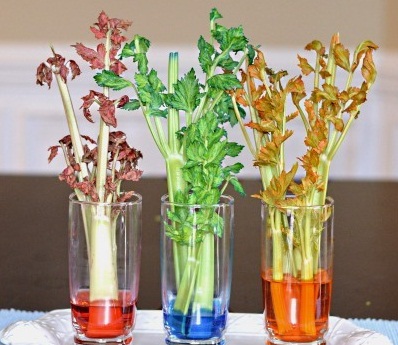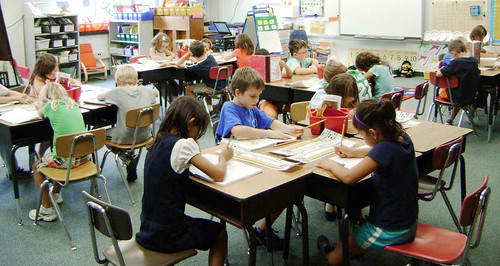Do you like doodling?
http://blog.ted.com/2013/06/10/a-field-guide-to-ted-graphic-notes/
Click on the link to a TED (Technology Design Entertainment) blog about graphic notes....
I also like to extend my thinking and creative design by written notes, drawing, modeling and doodling. I play while I think! Observation and recording is in my DNA and upbringing: I come from a family of archeologists, scientists and artists. My father would take notes, sketch and take photos in the field wherever we travelled. In Greece, we would walk up mountains and look for evidence of people, ancient settlements and sacred places. We would look for pieces of pottery or ruined walls and take time to record and map them. As a young child I kept travel diaries and later, as an architect student, I always had a sketch notebook and camera with me. Now thirty years on, I refresh my memory of both people, places and buildings through my drawings, photos and social media.
I use sketches, notes and poetry to process, understand and reflect on the world around me.
And how about you? Do you like to write and draw, observe and record? What media do you use?
Observe and journal with children at school
Here's my photo and a second grader's sketch 10 minutes later after seeing the Space Shuttle fly over the school, April 17, 2012.
And here other children reflect on their observations in the schoolyard...
Record date, weather and plants and animals each time you go out to study in your schoolyard using the Field Study Data sheets in
Growing Up Wild (for ages 3 -7), page 58-59.
Do an extended project like
Journey North's Tulips with 5 - 10 year olds. Record the tulips' growth in a special notebook. Plant the tulip bulbs in the fall, and watch them grow and flower in the spring. Share your observations.
Have a Garden Science Notebook for each child for the year.
Journal
Make your own journal as a project.
http://www.kidsgardening.org/node/11764
Or as a simply decorate your own spiral-bound notebook - or buy a ready-made journal.
Or splashout and buy an artist's
moleskine journal.
Black, white or color?
Experiment: What is the difference in your record-keeping is if you use: pencil, pen or color, paint, crayons, felt pens? Any trade-offs between expediency and rendition?
Plain or Lined?
Do you notice a difference between using plain or lined paper? Why?
I prefer to use plain paper...
Extension
Try other media for observing and journaling: use your phone, tablet, blog, other social media.
Can you share your observations and data with other citizen scientists?
Design
Try a design project based on your observations...
References
Growing Up Wild:
http://www.projectwild.org/growingupwild.htm
Journey North Tulips:
http://www.learner.org/jnorth/tm/tulips/AboutSpring.html
Create a Journal:
http://www.kidsgardening.org/node/11764
Arlington Traditional School Garden Blog:
http://www.apsva.us/Page/3592

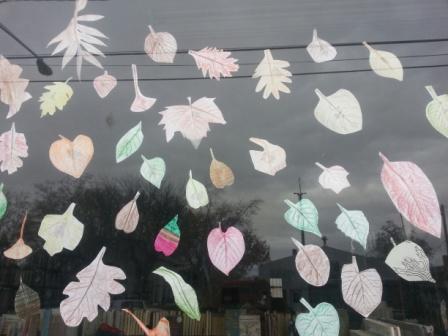 I shared these changes with the afterschool kids, and they discussed seasonal changes they have seen. Due to time and daylight limitations, I brought nature indoors, sharing leaves that I found at home. (If time allows, I’d recommend you take students outside to look for leaves and other signs of fall. Wooded areas, school yards, parks, neighborhoods, even your own backyard are all great places to search.)
I shared these changes with the afterschool kids, and they discussed seasonal changes they have seen. Due to time and daylight limitations, I brought nature indoors, sharing leaves that I found at home. (If time allows, I’d recommend you take students outside to look for leaves and other signs of fall. Wooded areas, school yards, parks, neighborhoods, even your own backyard are all great places to search.)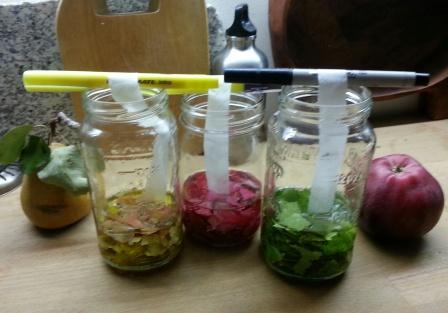 Although a leaf may appear to be one color, it actually contains pigments of multiple colors. In the summer, chlorophyll, the green pigment, dominates, concealing others. As chlorophyll breaks down in the fall, other pigments reveal themselves or form, turning the leaves yellow, orange, or red. I led the afterschool students through a chromatography experiment to identify what colors were hiding inside the leaves.
Although a leaf may appear to be one color, it actually contains pigments of multiple colors. In the summer, chlorophyll, the green pigment, dominates, concealing others. As chlorophyll breaks down in the fall, other pigments reveal themselves or form, turning the leaves yellow, orange, or red. I led the afterschool students through a chromatography experiment to identify what colors were hiding inside the leaves.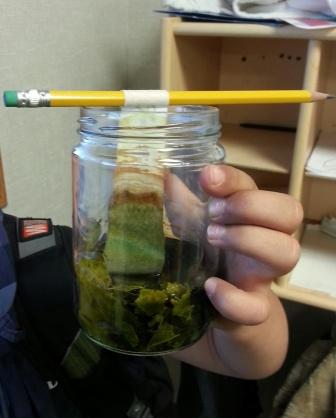 We successfully extracted red, yellow, and green pigments from the leaves! Because the color of each leaf is determined by a combination of the pigments inside, each paper strip had bands of colors in different sizes.
We successfully extracted red, yellow, and green pigments from the leaves! Because the color of each leaf is determined by a combination of the pigments inside, each paper strip had bands of colors in different sizes.